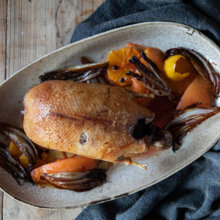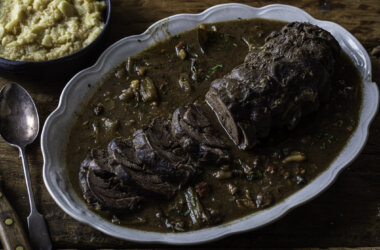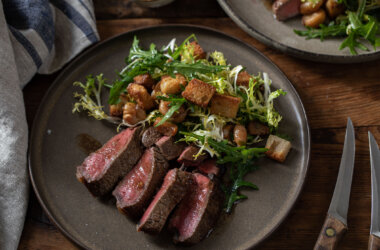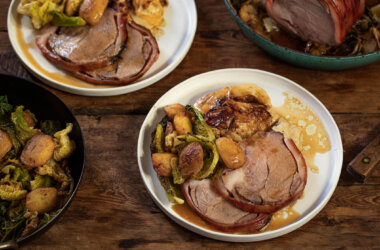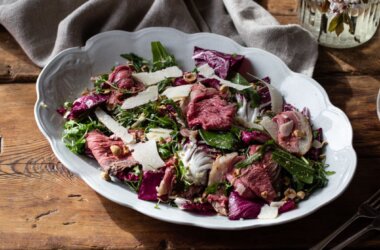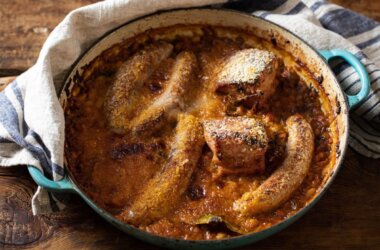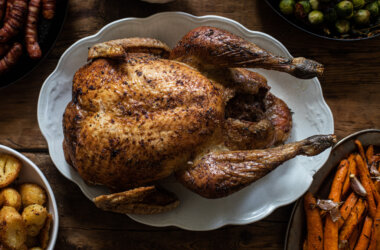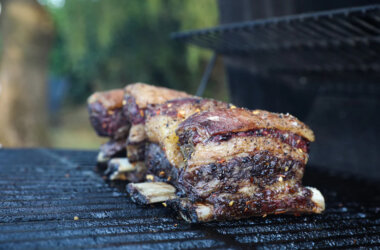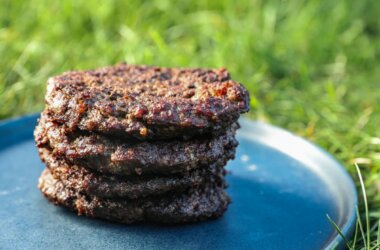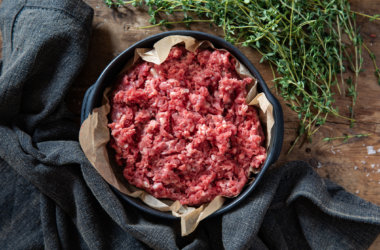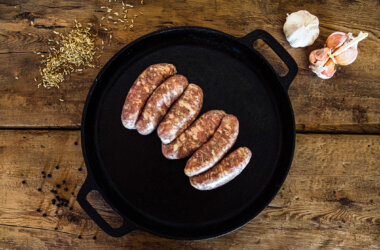The first time I made this, an 8-year-old spat it out. The second time I made this, my 4-year-old refused it. The third time I made this, I used Yorkshire’s Finest Mutton and served it up to a crowd of strangers at a #CookforIran supper club, and it was a massive hit. Home run. Sweet. Sour. Savoury. Herbaceous. Muttony. Utterly delicious. This mutton stew recipe, khoresh rivas, is a celebration of flavour, and a perfect dish to showcase the extraordinary nature of British produce – namely rhubarb and Swaledale Butchers’ incomparable mutton. And, listen, I’m not saying for certain that your 8-year-old will spit it out, and I’m not saying that your 4-year-old will definitely refuse it. But I do guarantee that it’ll be a massive hit with everyone over the age of … indiscriminate pickiness. Plus, vegetarians take note: My mother loves the flavours of khoresh rivas so much that she, a lifelong vegetarian, eats and craves it, picking the large chunks of meat out, enjoying everything else with gusto. Serve this Iranian stew with rice and a vinaigrette-dressed green salad. Smile.
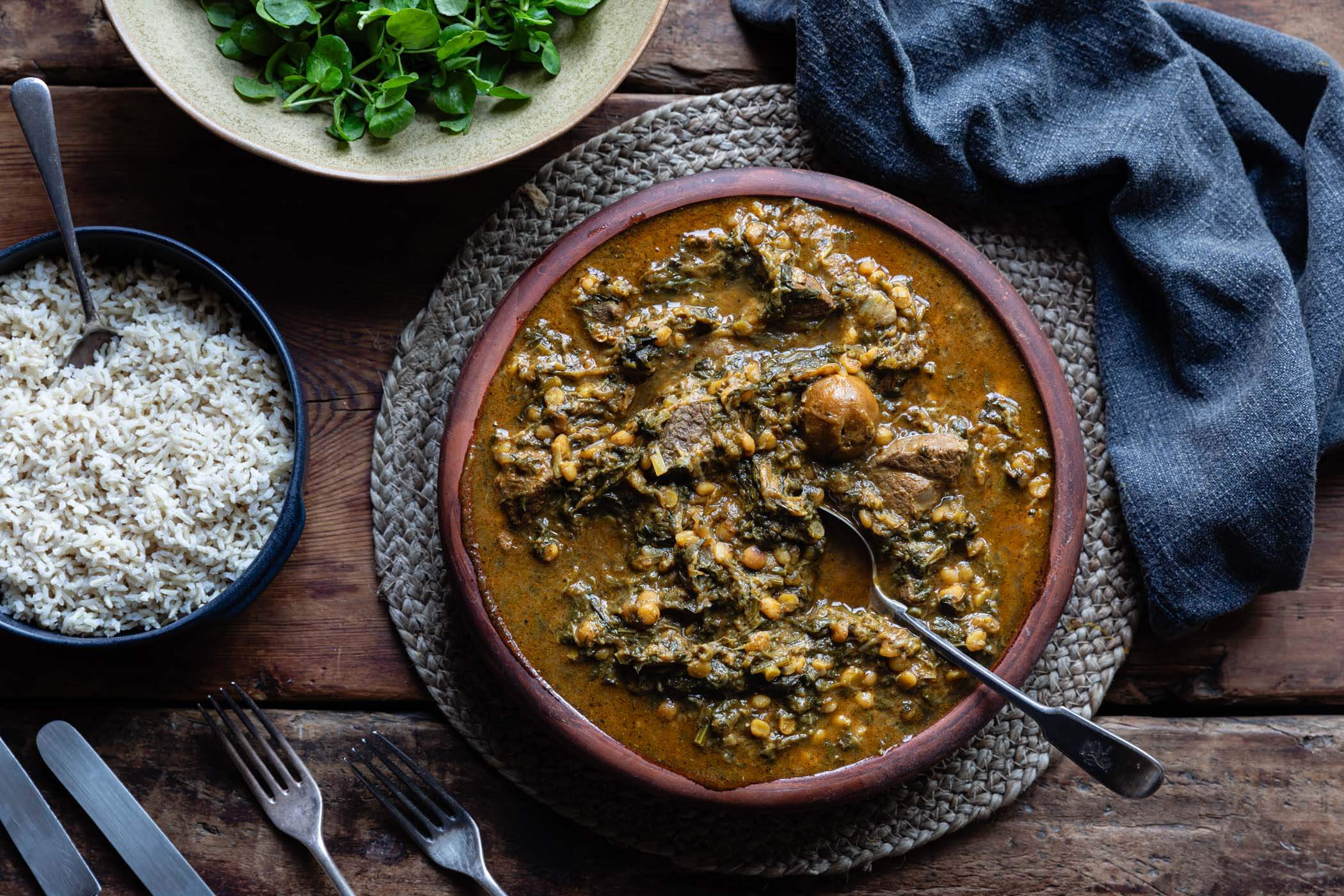
Serves 4
Ingredients
Method
- In a large dutch oven or stew pot, heat 2 tablespoons of oil over medium heat, and then add the sliced onions. Cook, stirring occasionally, until the onions are lovely and soft and golden.
- Then add the mutton and sauté for a few minutes to brown the meat. Add the salt, pepper and turmeric, stir to combine, and sauté for another minute.
- To the pot, add 600ml tap water. Turn the heat up and bring the water to a boil. Once the water boils, immediately turn the heat down to low so that the water barely simmers. Cover and cook, stirring occasionally, for 1 hour.
- While your meat is cooking, pull out your largest frying pan and heat 2 tablespoons of oil over a medium heat. Add the chopped parsley and cook, stirring frequently so that the herbs do not burn, and adding in a little extra oil if your pan seems too dry. After about 5 minutes, add both the fresh and dry mint and cook, again stirring frequently, for 2 more minutes or until you can smell springtime rising from your pan. Once aromatic, add the herb mix to the pot with the mutton. Hold on to the frying pan; you’re going to need it again in a bit.
- To prepare your saffron, put the threads in the bowl of a mortar and pestle, along with an equivalent amount of sugar. You only need ½ tsp of saffron for this recipe, but you can pre-bloom and dissolve more than that if you like, and keep the liquid mixture in a lidded glass container in the refrigerator for up to one week. Grind the saffron and sugar into a fine powder and add the powder to the glass jar. Pour in the rose water (scaling up if you are scaling up your saffron), and stir to dissolve. If you don’t have rose water, don’t fret, you can do this with an equivalent amount of freshly boiled water, but the rose water does add a certain something special to the flavour.
- Once your saffron is ready, add it to the pot, along with the tomato purée, dried limes, lime zest and yellow split peas. Stir everything to combine, cover and continue cooking for another 30 minutes.
- As the stew cooks, watch the water levels. You want enough liquid for it to be servable over rice on a plate—you are not making a soup that goes in a bowl. Add more liquid if you think it needs it, or remove the lid and let some liquid evaporate if you think things are looking too juicy.
- Add the final tablespoon of oil to the frying pan and heat over medium. Add the rhubarb, preferably in one layer, and cook for 2 to 4 minutes. You’re just looking to soften the rhubarb a bit, but not for it to lose its shape and dissolve into mush.
- Check on your stew at this point. Taste and add salt as needed. Make sure your liquid level is where you want it. And, when you’re ready, add the softened rhubarb to the stew. Stir gently to distribute the rhubarb throughout. Cook, partially covered, for 10 more minutes. Taste it again. If it’s too sour for you, add a smidge of sugar. If it needs more acid, give it a squeeze of lemon or lime. If it’s perfect for you, scoop out and discard the dried limes, and get ready to eat and enjoy.
- Serve this beauty with rice and a green salad. And hope there are leftovers…..because it tastes even better on day two. Enjoy!

